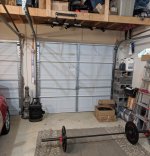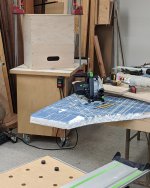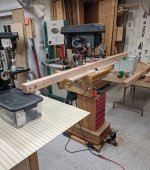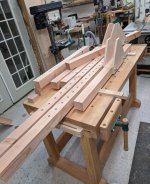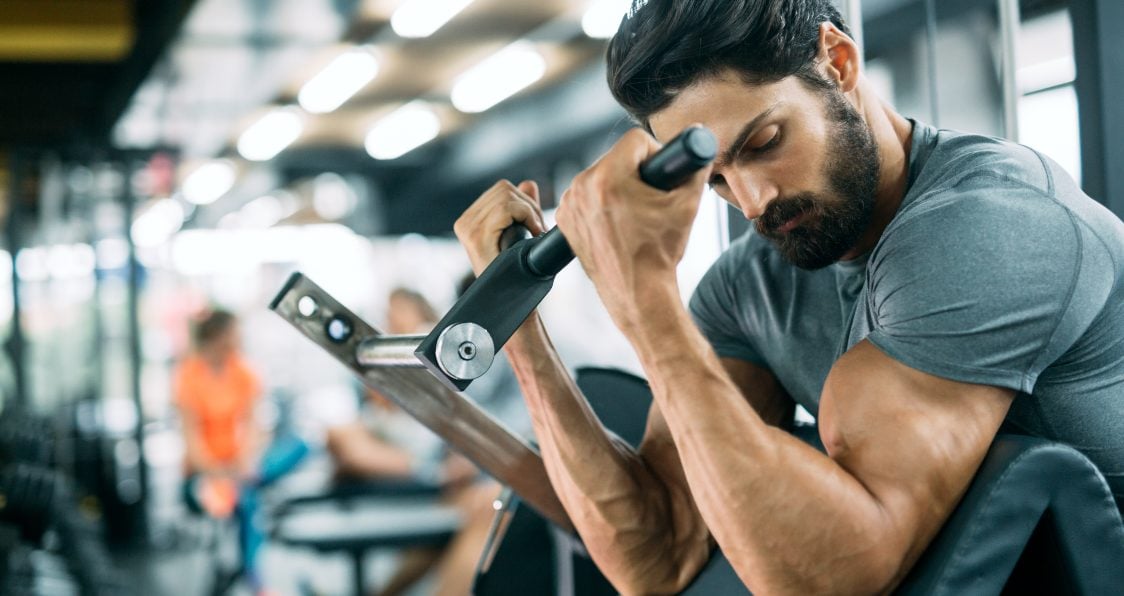When I moved 90 miles upstate there was no convenient gym. I created my basement gym by carving out spaces.
The best thing I made was a pull-down/push down pulley system.
I mounted two overhead pulleys and used 1/8” cable. Note: My floor joists are 3” x 8” and it allowed me to screw right into the joist. Use very long and very strong screws for this application. You don’t want the pulley to pull loose while you are executing an exercise.
The cable runs to a stack of weights on the floor.
Some notes: I used 1/8” diameter cable. It has a working load limit of 400 pounds. That usually includes a 2x or 3x safety factor. I never went over 180 pounds on my system. So 1/8” diameter is more than enough.
I tried 3/16” diameter and it was hard to work with. Resist the temptation to use heavier than needed cable.
You will notice that I used swadged collars to attach the hardware. They sell what looks like a heavy duty bolt cutter with special jaws for swadging. The machine cost about $30.00 back then, and it makes a more secure fastening. It is also cheaper than using U-bolts.
The larger the diameter on the pulleys, the longer the cable will last. Examine the cable frequently. If 2 or 3 of the strands have broken, you should replace the cable immediately. The strands fatigue over time and smaller diameter pulleys mean faster fatigue.
From personal experience, I can attest that cable equipment must be well-maintained.
About 50 years ago, while working out in a Jack LaLane gym, a cable gave way on the curling machine while a member was doing heavy curls. When the cable failed, the bar completed the arc with no resistance, knocking out all of his front teeth, both top and bottom.
And personally, I was doing behind the neck pulldowns with a wide grip and 220 pounds of weight on it at a very up-scale and posh gym, when the cable failed. I pulled the then resistance-less bar down with that same effort and hit a vertebrae on the back of my neck. X-rays shows a hairline fracture with no displacement. The doctor said I was very, very lucky.
I always check the condition of the cable at the start of a workout. (And I now do my pulldowns in front of my chest.)
The cable setup works for tricep push downs as shown. For pulldowns, I sit on the floor. Without any method for anchoring me to the ground, I am limited to about 2/3 body weight for pulldowns.
I got the pulley hardware from Grainger. The rest from Dick’s Sporting Goods, and maybe also from Amazon.com. (I really don’t recall.)
I have replaced the cables twice in 30 years, though I have found other uses for the swadging machine. In the past I have remembered to slip a length of shrink tubing over the cut wires. I forgot this time. The trimmed ends of cable are your enemy.
Note: I have made several caveats about cable systems. In the 30 + years this has been in service, the only accident I have had was poking a small hole in my hand from a cut cable strand. Good maintenance is really all that is required for safe use.


